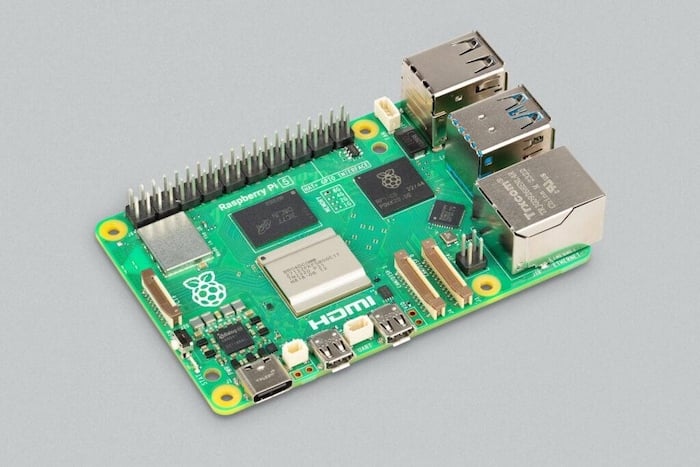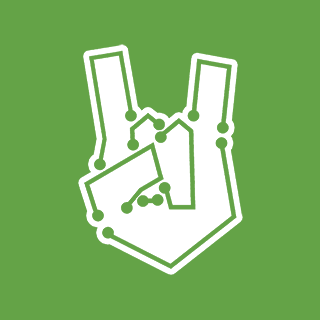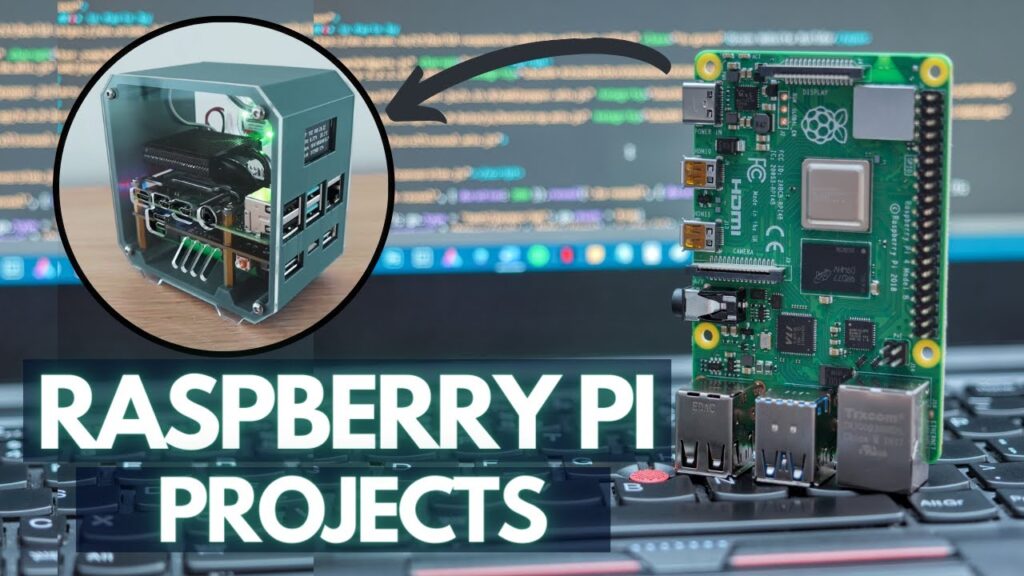Latest Trends in Raspberry Pi – The world of the Internet of Things (IoT) has rapidly evolved, connecting devices and enabling them to communicate seamlessly. One key player in this technological revolution is the Raspberry Pi, a credit-card-sized computer that has become a cornerstone for IoT enthusiasts and professionals alike. In this article, we will delve into the world of the latest trends in Raspberry Pi IoT, exploring its capabilities, applications, and the impact it has on shaping the future of connected devices.
Raspberry Pi is a single-board computer developed by the Raspberry Pi Foundation with the primary goal of promoting computer science education. However, its compact size, low cost, and impressive capabilities have made it a popular choice for various applications, including IoT. The Raspberry Pi typically features a processor, RAM, USB ports, HDMI output, and GPIO (General Purpose Input/Output) pins, allowing users to connect and control external devices.

The Role of Raspberry Pi in IoT
A. Cost-Effective Solution
One of the defining features of Raspberry Pi is its affordability, making it an attractive option for IoT projects. Traditional computers or microcontrollers can be more expensive and complex, while Raspberry Pi offers a budget-friendly alternative without compromising on performance.
B. Versatility in Applications
Raspberry Pi’s versatility allows it to be utilized in a wide range of IoT applications. Whether it’s home automation, industrial monitoring, smart agriculture, or wearable technology, the Raspberry Pi can be adapted to meet diverse needs. Its compatibility with various programming languages, including Python, makes it accessible to both beginners and experienced developers.
Setting Up Raspberry Pi for IoT
A. Hardware Configuration
To kickstart a Raspberry Pi IoT project, users need to set up the hardware components. This includes connecting the Raspberry Pi to power, attaching peripherals such as a keyboard and mouse, and establishing network connectivity through Ethernet or Wi-Fi.
B. Installing the Operating System
Raspberry Pi supports several operating systems, with Raspbian (now known as Raspberry Pi OS) being the default and widely used choice. Installing the operating system involves downloading the image, flashing it onto a microSD card, and booting up the Raspberry Pi.
C. IoT Software and Protocols
Various IoT software and protocols can be implemented on Raspberry Pi, depending on the project requirements. MQTT (Message Queuing Telemetry Transport) and CoAP (Constrained Application Protocol) are popular communication protocols for IoT applications. Additionally, platforms like Node-RED and Cayenne provide user-friendly interfaces for IoT project development.
Real-World Applications of Raspberry Pi
| A. Home Automation | Raspberry Pi has found a home in the realm of smart homes, enabling users to automate and control various devices. From smart lighting and thermostats to security systems and voice-controlled assistants, Raspberry Pi’s computational power and GPIO pins facilitate seamless integration and control. |
| B. Industrial IoT | In industrial settings, Raspberry Pi can be employed for monitoring and controlling machinery, collecting data for predictive maintenance, and optimizing processes. Its compact size and cost-effectiveness make it a valuable asset in industrial IoT solutions. |
| C. Environmental Monitoring | Raspberry Pi’s ability to interface with sensors makes it an excellent choice for environmental monitoring applications. Whether tracking air quality, soil moisture, or weather conditions, Raspberry Pi can collect and transmit data to a centralized system for analysis. |
Challenges and Considerations
While Raspberry Pi is a powerful tool for IoT projects, there are some challenges and considerations to keep in mind. Power consumption, limited processing power for resource-intensive applications, and security concerns are aspects that developers must address when designing and implementing Raspberry Pi-based IoT solutions.
Future Trends and Innovations
The world of IoT is ever-evolving, and Raspberry Pi continues to adapt to emerging trends. As technology advances, we can expect to see more powerful iterations of Raspberry Pi, offering enhanced capabilities for handling complex IoT applications. Integration with artificial intelligence and machine learning is also on the horizon, opening up new possibilities for intelligent and autonomous IoT systems.
Community and Collaboration
One of the strengths of the Raspberry Pi ecosystem lies in its vibrant and collaborative community. Enthusiasts, developers, and educators from around the world actively share their knowledge, projects, and troubleshooting tips through forums, blogs, and social media. This sense of community fosters an environment of continuous learning, making Raspberry Pi an accessible platform for individuals at all skill levels.
Educational Impact
Originally designed for educational purposes, Raspberry Pi continues to play a crucial role in introducing students to the world of computing and programming. Its simplicity, combined with the vast array of online resources and educational materials, makes it an ideal tool for teaching coding, electronics, and problem-solving skills. The hands-on experience gained from working with Raspberry Pi empowers learners to explore STEM (Science, Technology, Engineering, and Mathematics) subjects in an engaging and practical manner.
Integration with Cloud Services
Raspberry Pi’s compatibility with cloud services adds another layer of functionality to IoT projects. Cloud platforms such as AWS IoT, Google Cloud IoT, and Microsoft Azure IoT offer scalable solutions. For managing and analyzing data from Raspberry Pi devices. This integration enables users to leverage the power of cloud computing for data storage, analytics, and remote management.
Conclusion
Raspberry Pi’s influence on the landscape of IoT is undeniable. Its accessibility, versatility, and affordability have empowered individuals and organizations to explore and implement innovative IoT solutions across various domains. As we look to the future, Raspberry Pi is likely to remain a driving force in shaping the connected world. It is fostering creativity and pushing the boundaries of what is possible in the Internet of Things. Whether you are a hobbyist, a student, or a professional, Raspberry Pi provides an exciting platform. Embark on a journey into the vast and interconnected world of IoT.
FAQs on Latest Trends in Raspberry Pi
What is the latest model of Raspberry Pi?
Over the years, it’s been revised to add improved processors, new wireless connectivity options, and other improvements. The latest version in the line is the Pi Zero 2 W. Launched in late 2021, this model includes a system-in-a-package (SiP) design based on the previous-generation Pi 3.
What are the features of the Raspberry Pi?
The Raspberry Pi is a small, inexpensive gadget with a lot of processing power. It has numerous interfaces, including Ethernet, onboard Wi-Fi, Bluetooth, USB-powered, HDMI and USB ports, many GPIOs, etc. The gadget supports both Python and Linux.
What is unique about Raspberry Pi?
The Raspberry Pi is a very cheap computer that runs Linux. But it also provides a set of GPIO (general purpose input/output) pins. Allowing you to control electronic components for physical computing and explore the Internet of Things (IoT).


